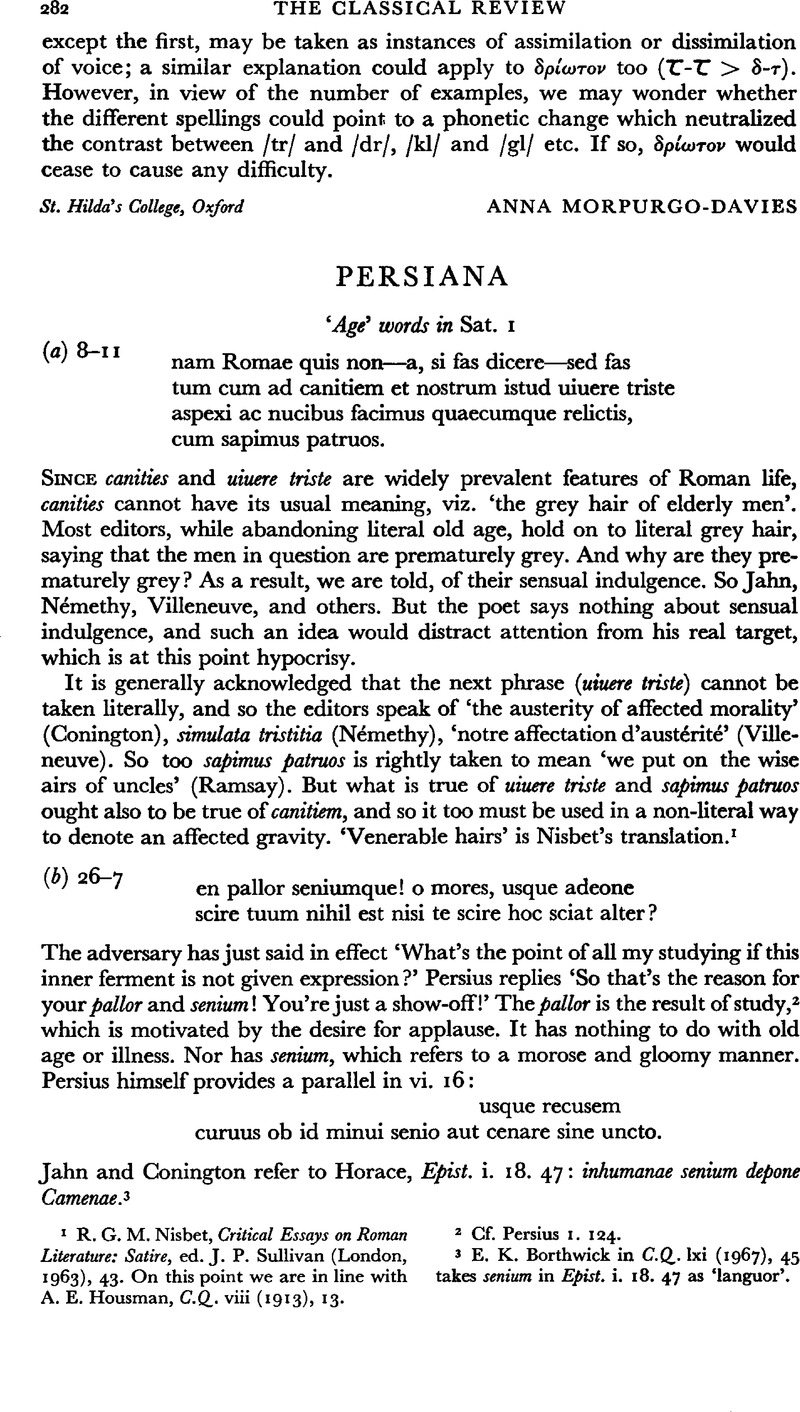No CrossRef data available.
Article contents
Persiana
Published online by Cambridge University Press: 27 February 2009
Abstract

- Type
- Review Article
- Information
- Copyright
- Copyright © The Classical Association 1970
References
page 282 note 1 Nisbet, R. G. M., Critical Essays on Roman Literature: Satire, ed. Sullivan, J. P. (London, 1963), 43Google Scholar. On this point we are in line with Housman, A. E., C.Q. viii (1913), 13Google Scholar.
page 282 note 2 Cf. Persius 1. 124.
page 282 note 3 Borthwick, E. K. in C.Q. lxi (1967), 45 takes senium in Epist. i. 18. 47 as ‘languor’Google Scholar.
page 283 note 1 Housman, op. cit. (p. 282 n. 1 above), 14.
page 283 note 2 Madvig, Adv. crit. ii. 128.
page 284 note 1 So Conington in his note. His translation, however, says ‘when bursting’, which is close to the interpretation advocated here.
page 285 note 1 Dessen, C. S., Iunctura Callidus Acri (Illinois, 1968), 32Google Scholar.
page 287 note 1 Whatever view one adopts about the voices, it is hard to reconcile stertis adhuc with 7 ff. I assume that there is a slight inconsistency and that Persius overlooked or ignored it.


